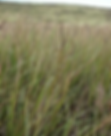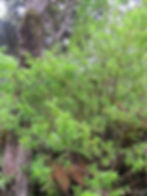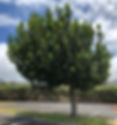top of page

Call for Availability













































Groundcovers
ʻIlieʻe
( Plumbago zeylanica) Fast growing, hardy ground-cover. Can grow from sea level to 900 ft in elevation. It grows well in dry to semi-arid environments. Small white flowers appear year round that are slightly sticky. Used for medicine and tattoos and for stabilizing erosion.
ʻAhuʻawa
(Cyperus javanicus)
A sedge about .3 to 1.3 m high, with a basal tuft of long narrow leaves and a radiating inflorescence borne at the tip of a long slender stem. Stalks made into cordage and used to strain awa or wai niu.
ʻIlima papa
(Sida Fallax) Small to large native shrubs bearing yellow, orange, greenish, or dull-red flowers; some kinds strung for leis. The flowers last only a day and are so delicate that about 500 are needed for one lei. The ʻIlima was designated in 1923 by the Territorial Legislature as the flower of Oʻahu. It is related to the hibiscus.
Kupukupu
(Nephrolepis cordifolia) Hardy indigenous sword fern with long narrow fronds. Used as a ground cover or filler. Plant in in sun or shade.
Naʻenaʻe
(Dubautia ciliolata) Shrubs or small trees with narrow leaves and small yellow, orange, purple, or white flower heads borne in large cone-shaped clusters. Usually found in lava and well drained soils.
Palaʻā Fern
(Sphenomeris chinensis) The lace fern, a common wild fern in Hawaiʻi; also known in other parts of Polynesia and in Asia. Long, slender stems support delicate lacy looking fronds, about 30 cm long, which are subdivided three times. This plant is hardier than it looks and will survive in harsh conditions. Used for lei making and dye.
Paʻu ʻo Hiʻiaka
Pa’u ʻo Hiʻiaka ( Jaquemontia ovafolia subsp. sandwicensis) is a nice groundcover related to Morning Glories. It grows on rock or sand. It is salt and drought tolerant, and can thrive at dry locations and over rocks. Once rooted, the plant will send out runners that can cover over a wall or crawl across the ground. Flowers are small white or light blue flowers.
Pili Grass
A grass (Heteropogon contortus) known in many warm regions, formerly used for thatching houses in Hawaiʻi. A hardy grass that can live in harsh conditions. Used for erosion and dust control.
Pōhinahina
Pōhinahina (Vitex rotundifolia) A sprawling shrub (2-3ft.) with rounded leaves that are silvery-green in color on top and whitish underneath. Small purple flowers form clusters which emerge at the tips of the branches. Very hard and fast growing.
ʻUhaloa
A small, downy, plant (Waltheria indica) with ovate leaves and small, clustered yellow flowers. Leaves and inner bark of root are very bitter and are used for tea or chewed to relieve sore throat.
ʻUkiʻuki
(Dianella sandwicensis), a native member of the lily family, with a short stem and long, narrow leaves, from among which arises a cluster of white or bluish flowers. The attractive fruits are blue, long-persistent berries formerly used to dye tapa. 

Shrubs
Aʻaliʻi
Native hardwood shrubs or trees (Dodonaea sp.), 30 cm to 10 m high, leaves narrow, 2 to 10 cm long; flowers small; fruit a yellow, red, or brown papery capsule about 1 cm long and with two to four wings. Red seed pods are made into leis with their own leaves or by adding ferns 
Koʻoloa ʻUla
A native shrubby hibiscus (Albutilon menzii ) with red flowers. The wood produced fine charcoal. Miniature hibiscus looking maroon flowers make unusual leis. Grows well in hot dry climates or low elevation.
ʻĀkia
Endemic shrubs and trees (Wikstroemia spp.) with small leaves, tiny yellowish flowers, and yellow to red, small, ovoid one-seeded fruits. The bark yields a fiber; the bark, roots, and leaves used to anesthetize fish.
Kokio Keʻokeʻo
Kokio Keʻokeʻo (Hibiscus arnottianus) Native white hibiscus. Light fragrance. The flowers bloom year round. Stems used for kapa making.
Kokio ʻUla
(Hibiscus Clayii) A shrub of 40–90 centimetres (16–35 in) Leaves are medium green, shiny, smooth-edged or slightly toothed on the tip. Single flowers are borne at the ends of the branches. They are showy, bright or dark red and they bloom all year around. 
Lei Ilima or Ilima kū
(Sida fallax) This ʻIlima has an upright form and produces abundant yellow-orange 1-inch blossoms. The flowers are great for bees and other beneficial insects. The flowers are used to make lei.
Koʻokoʻolau
All kinds of beggar ticks (Bidens spp.), most native, a few introduced, some used medicinally by Hawaiians, as a tonic in tea; the plants are still dried and used for tea, often in preference to tea bought in stores.
Naupaka Kuahiwi
(Scaevola chamissoniana) is a shrub in the family Goodeniaceae and its native range is the Hawaiian Islands, where it is known as the Mountain naupaka or Naupaka kuahiwi. it is found in wet forests and open areas at elevations of about 1150 feet and flowers all summer and throughout the year.
Naupaka Kahakai
Native species of shrubs (Scaevola) found in mountains and near coasts, conspicuous for their white or light-colored flowers that look like half flowers.
Māmaki
Shrubs or small native trees (Pipturus albidus) with broad leaves and white mulberry-like fruit; the bark is used for making for one kind of Kapa. The leaves are made into a tea.
Maile
(Alyxia stellata) The maile vine has shiny fragrant leaves and is used for decorations and leis, especially on important occasions. It is a member of the periwinkle family. Laka, goddess of the hula, was invoked as the goddess of the maile, which was one of five standard plants used in her altar.
Maʻo
The native cotton (Gossypium sandvicense), a shrub in the hibiscus family, bearing yellow flowers and seed cases containing brown cotton.
ʻŌhai
A native legume (Sesbania tomentosa), a low to prostrate shrub with hairy, pale leaves and red or orange flowers about 2.5 cm long.
ʻOha wai
‘Ohā wai, (Clermontia sp. or Delissea sp. )is a large shrub with curved tubular flowers that are symbiotic with native birds of Hawaii. It is one of 126 species of native lobeliads scattered across the Hawaiian Islands.
Pāwale
Native dock (Rumex giganteus), a coarse erect or vinelike plant with ovate or oblong leaves, and topped with panicles of tiny flowers, belonging to the buckwheat family.
ʻŪlei
A native spreading shrub (Osteomeles anthyllidifolia), it has compound leaves, small white roselike flowers, small round white fruit. The wood is tough and formerly was used for stringing the top of fishing nets, fish spears, and the ʻūkēkē , a musical instrument. The fruit is mashed and made into a blueish grey dye.

Mid-Canopy Trees
Alaheʻe
A large native shrub or small tree (Psydrax odoratum) with shiny leaves and small, very fragrant white flowers. The wood is hard and was formerly used in making the ʻōʻō digging stick; also used medicinally.
Kolea
Native species of trees and shrubs (Myrsine lessertania) with oval to narrow leaves more or less crowded at branch tips, small flowers, and small round fruits among or below the leaves.
Kōpiko
About 13 native species of trees belonging to the genus Psychotria, a member of the coffee family. Leaves are thick, leathery, blunt or pointed; flowers small, white, clustered at the ends of long stems at branch tips. 
Pilo
All Hawaiian species of Coprosma, a genus of shrubs and small trees belonging to the coffee family, with narrow to rounded leaves, tiny greenish flowers, and yellow, red, or black berries.

Trees
Hōawa
Hōawa are the native hawaiian species of the genus Pittosporum. The growth habit can be shrubs to small trees, with narrow leaves clustered at branch ends, and thick-valved fruits containing many seeds surrounded by a sticky substance. The fruit is the favorite food of the Hawaiian Crow , the Alalā.
Kamani
A large tree (Calophyllum inophyllum), from the Indian and western Pacific Oceans, with shiny, oblong leaves to 20 cm long. It has white flowers and globose green fruits about 2.5 cm in diameter. The beautiful wood is hard and is made into bowls and calabashes. The seeds are polished and made into lei. The oil from the seed is well known as a a skin moisturizer (Tamanu).
Koa
Koa , ( Acacia koa) is a native hardwood found throughout the Pae ʻāina (Hawaiian islands). The beautiful wood is used in furniture making, canoe building and canoe paddles. The tree is very common in Hawaiian Moʻolelo (stories) and Mele (song). The leaves are ingeniously adapted to capture mountain mist.
Kou
A tree found on shores from East Africa to Polynesia (Cordia subcordata), with large, ovate leaves, and orange, tubular flowers 2.5 to 5 cm in diameter, borne in short-stemmed clusters. The beautiful wood, soft but lasting, was valuable to the early Hawaiians and was used for cups, dishes, and calabashes.
Laʻamia
Calabash tree (Crescentia cujete), introduced from tropical America, fruit used for hula rattle with aliʻipoe seeds.
Lama
All endemic kinds of ebony (Diospyros, synonym Maba), hardwood trees with small flowers and fruits.
Māmane
A native tree (Sophora chrysophylla), which thrives at high altitudes, up to the tree line, as on Mauna Kea and Mauna Loa. The leaves are narrow, compound, the flowers are yellow, the pods four-winged, yellow-seeded. The seeds are the favorite food of the native Palila bird found in the same areas. 
Milo
A tree to 12 m high (Thespesia populnea), used for shade along coastal areas. The wood is used for bowls, the flowers for dye. It is related to the Hibiscus and has large yellow flowers.
ʻŌhiʻa Lehua (Red, Yellow, Orange, Dwarf)
The ʻOhīʻa tree (Metrosideros polymorpha) is the most significant plant in the Hawaiian forest. The plant has many forms, from tall trees to low shrubs, leaves round to narrow and blunt or pointed and smooth or woolly. The flowers are red, rarely salmon, pink, yellow, or white. The wood is has many uses. The flowers and foliage made into lei. Many Hawaiian stories are connected to this tree. (These trees are not available for sale right now due to a disease called ROD.)
Plant List: RestaurantsMenus
bottom of page

